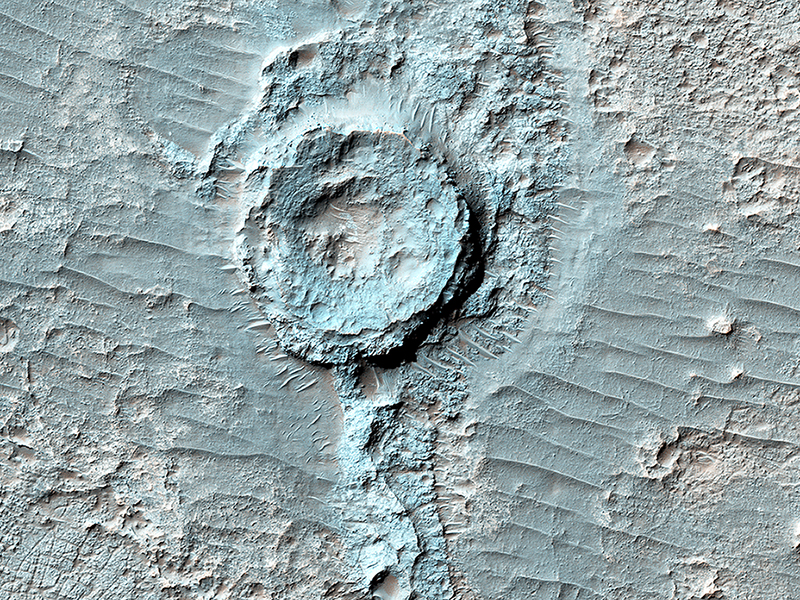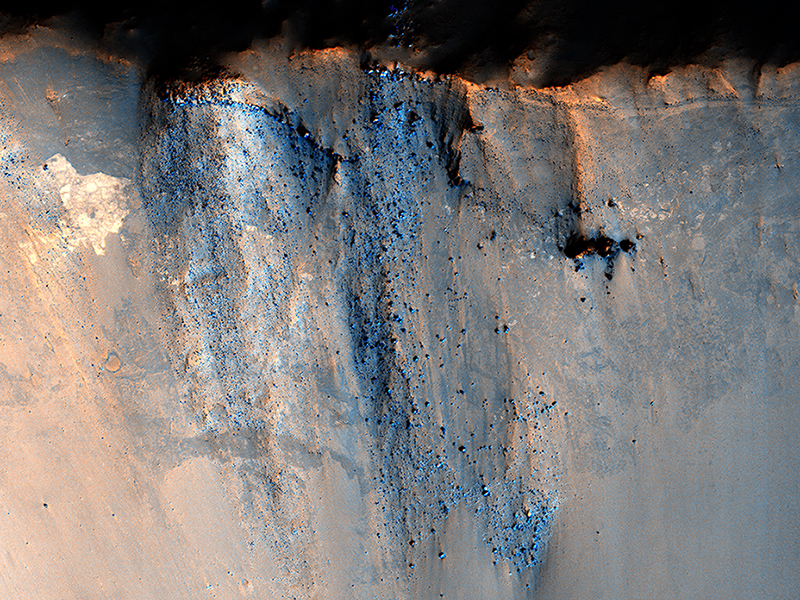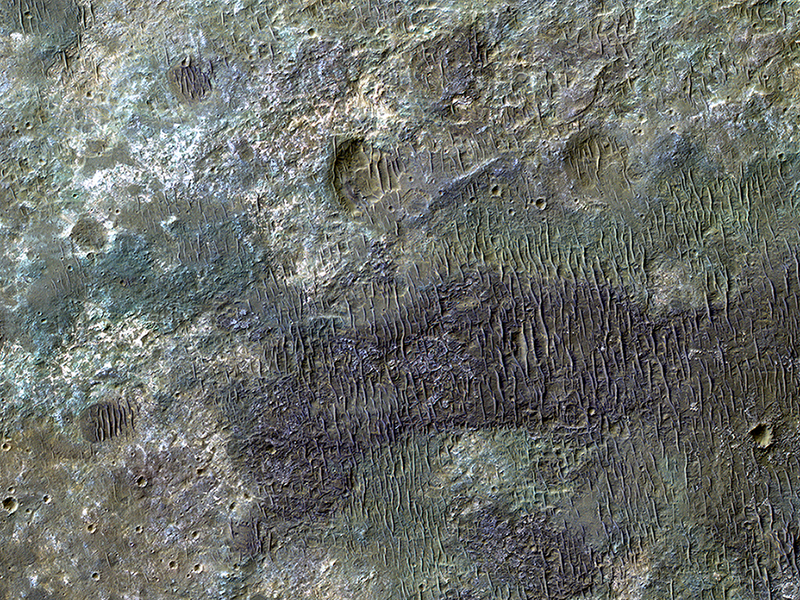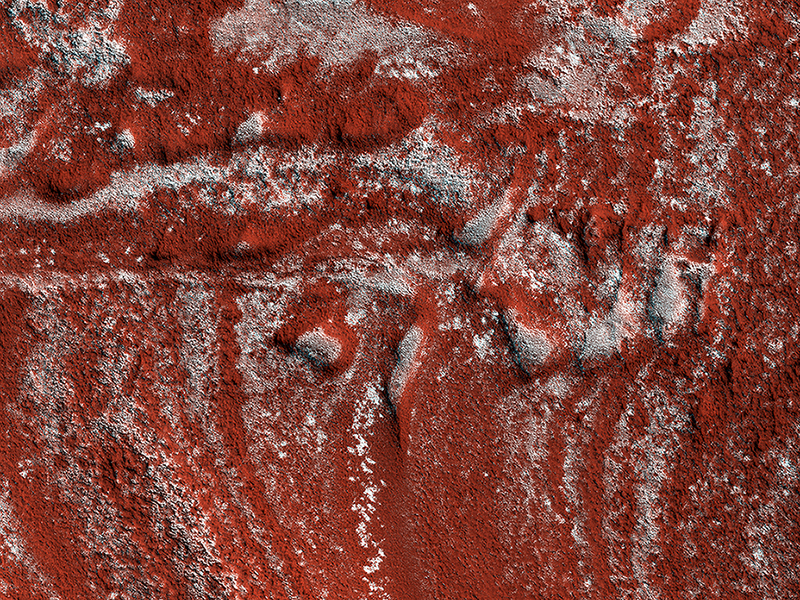HiRISE Targeting Specialists wrote:An Inverted Crater (ESP_043651_1590) (HiClip)
There is a circular feature in this observation that appears to stand above the surrounding terrain. This feature is probably an inverted crater: a once-normal appearing impact crater that was filled in with sediment. The fill became indurated, or hardened, until it was more resistant to subsequent erosion than the surrounding material.
Other craters in this image are not inverted or substantially infilled. This suggests that they were formed after the events that filled in and later exposed the inverted crater.
Christy Caudill, Livio Tornabene, Ian Pritchard and Eric Pilles wrote:Beautiful Blocks of Bedrock (ESP_044902_1575) (HiClip)
This image targets a 3-kilometer diameter crater that occurs within the ejecta blanket of the much older Bakhuysen Crater, a 150-kilometer diameter impact crater in Noachis Terra.
Impact craters are interesting because they provide a mechanism to uplift and expose underlying bedrock, allowing for the study of the subsurface and the geologic past. An enhanced color image shows the wall of the crater, which exposes layering as well as blocks of rock. There is a distinctive large block in the upper left of the crater wall, generally referred to as a œmega-block. It is an angular, light-toned, highly fragmented block, about 100 meters across. Several smaller light-toned blocks are also in the crater wall, possibly of the same rock type as the œmega-block.
Ejecta blocks are thrown outward during the initial excavation of a crater, or are deposited as part of the ground-hugging flows of which the majority of the ejecta blanket is comprised. Through images like these, we are able to study the deeper subsurface of Mars that is not otherwise exposed.
This is a stereo pair with ESP_044968_1575.
Alfred McEwen wrote:The Plains are Not Plain (ESP_045300_1630) (HiClip)
This image covers some of the plains south of Capri Chasma in eastern Valles Marineris.
Where the aeolian (wind-blown) sedimentary cover has been stripped away, we see diverse colors indicative of of a variety of altered minerals formed in Mars’ wetter past.
Alfred McEwen wrote:Drag Folds in the North Polar Layered Deposits (ESP_045308_2620) (HiClip)
This image shows what looks like drag folds, where rock layers bend (fold) before they break in a fault.
However, the North Polar layered deposits are composed of ice, and this is a large scale for such a feature, compared to drag folds on Earth. This image is part of a stereo pair, so with a 3D picture, we can better interpret the structure.
This is a stereo pair with ESP_044794_2620.
Credit: NASA/JPL-Caltech/University of Arizona
<< Previous HiRISE Update



